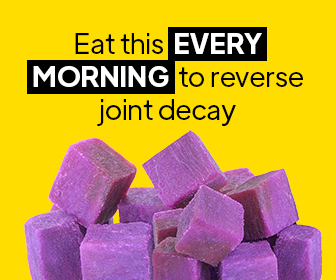When I first started learning about hormone therapy, I was fascinated by its potential benefits. Whether it’s hormone replacement therapy (HRT) for women in menopause, testosterone therapy for men, or gender-affirming hormone treatment, the way hormones interact with our bodies is nothing short of powerful. But as I dug deeper and even spoke with friends who had undergone hormone therapy, one recurring concern came up again and again: the impact on bone health.
I didn’t fully realize how much our bones depend on hormones until I saw it firsthand. A close friend of mine, who started estrogen therapy in her late 40s, began experiencing bone density changes within a couple of years. At the same time, my uncle, who was on androgen-deprivation therapy for prostate cancer, faced significant bone loss. These personal experiences made me take a closer look at the science and, more importantly, practical ways to protect bone health while on hormone therapy.
In this article, I’ll walk you through how different types of hormone therapy affect your bones, why this happens, and most importantly—what you can do to safeguard your skeletal strength for the long term.
The Link Between Hormones and Bone Health
Our bones aren’t just rigid structures; they’re living tissue, constantly breaking down and rebuilding. Hormones are critical regulators of this process. Here’s how the most common ones influence bone strength:
- Estrogen: Helps slow bone resorption (the process where bone is broken down). Low estrogen levels, such as during menopause or in men receiving androgen-deprivation therapy, accelerate bone loss.
- Testosterone: Supports bone density directly and indirectly (since testosterone can be converted into estrogen in the body). Low testosterone is often linked to fragile bones.
- Other hormones: Cortisol, thyroid hormones, and parathyroid hormone also play roles, but in hormone therapy discussions, estrogen and testosterone dominate.
When these hormones drop significantly—or when their balance is altered through medical treatments—bones become more vulnerable to conditions like osteopenia and osteoporosis.
How Hormone Therapy Affects Bone Health
1. Menopause and Hormone Replacement Therapy (HRT)
During menopause, estrogen levels plummet. This sudden hormonal shift is one of the biggest risk factors for osteoporosis in women. Hormone replacement therapy can help slow down bone loss, especially when started around the time of menopause. However, HRT comes with risks, so doctors often recommend it in the lowest effective dose for the shortest possible time.
2. Testosterone Therapy in Men
For men with low testosterone, hormone replacement can actually improve bone density. Restoring testosterone levels strengthens bones and reduces fracture risk. But here’s the nuance: if testosterone therapy is mismanaged or combined with other medications, it can throw off the natural hormonal balance.
3. Androgen-Deprivation Therapy (ADT) for Prostate Cancer
This is where the risk is especially high. ADT reduces testosterone levels to slow cancer growth, but it also accelerates bone loss dramatically. Patients on long-term ADT often need proactive bone-protection strategies.
4. Gender-Affirming Hormone Therapy
For transgender individuals, hormone therapy can significantly affect bone health—both positively and negatively. Trans women (taking estrogen and anti-androgens) may experience decreased bone density if therapy isn’t carefully monitored. Trans men (taking testosterone) often see improved bone mass, but long-term effects require more research.
I’ve spoken with a trans friend who shared that one of the biggest challenges is consistent monitoring. Without regular bone scans, it’s easy to overlook gradual bone loss until problems arise.
My Personal Reflection on Bone Health During Hormone Changes
While I haven’t personally undergone hormone therapy, I’ve had to face my own bone health concerns. After years of sitting long hours at work, a minor fall left me with a wrist fracture that healed much more slowly than expected. My doctor suggested checking bone density earlier than most people my age, and the results were eye-opening.
Even though I wasn’t on hormone therapy, my slightly lower-than-normal bone mass reminded me just how important hormones, diet, and lifestyle are to bone strength. It made me even more determined to help others—including those on hormone therapy—understand that bone protection isn’t optional. It’s essential.
How to Protect Your Bones While on Hormone Therapy
Whether you’re on HRT, testosterone therapy, or gender-affirming hormones, here are science-backed steps to keep your bones strong:
1. Get Regular Bone Density Tests
A DEXA scan can reveal early bone loss before it turns into osteoporosis. If you’re on hormone therapy, especially ADT or long-term estrogen blockers, ask your doctor about scheduling regular scans.
2. Prioritize Calcium and Vitamin D
- Adults generally need 1,000–1,200 mg of calcium per day.
- Vitamin D helps your body absorb calcium and is essential for bone health. Sunlight, fortified foods, or supplements may be necessary, especially if blood tests show low levels.
3. Strength Training and Weight-Bearing Exercise
Lifting weights, walking, jogging, or even dancing helps stimulate bone growth. Personally, strength training has been a game-changer for me—I started with light dumbbells and gradually worked up, and not only did my bones benefit, but my mood and energy improved as well.
4. Avoid Excessive Alcohol and Smoking
Both habits weaken bones. If you’re serious about protecting your skeleton, cutting back (or quitting entirely) is one of the best moves you can make.
5. Medication Support (When Needed)
For those at high risk of fractures, doctors may prescribe medications like bisphosphonates or denosumab to slow bone loss. Don’t hesitate to ask your doctor if you might benefit from these.
6. Monitor Hormone Levels Regularly
Too much or too little hormone therapy can harm your bones. Consistent medical monitoring ensures that your treatment stays balanced for your overall health—not just for the condition being treated.
The Emotional Side of Bone Health and Hormone Therapy
What struck me most when talking with people on hormone therapy wasn’t just the physical side of bone loss—it was the emotional weight of it. Nobody wants to feel fragile. The thought of breaking a hip or spine from a simple fall can be frightening.
But here’s the encouraging part: with awareness and proactive steps, you can stay strong. My friend who started estrogen therapy now does yoga three times a week, takes vitamin D supplements, and gets her bone scans annually. Her last results showed improvement, and she told me, “I feel like I have power over my health again.” That mindset is just as important as the physical practices.
Final Thoughts: Hormones, Bones, and a Balanced Approach
Hormone therapy is a powerful medical tool, and for many, it’s life-changing. But like all powerful tools, it comes with responsibility. If you’re on hormone therapy—or considering it—don’t overlook your bones. They’re your body’s foundation, carrying you through life’s everyday movements and adventures.
To sum it up:
- Hormones play a vital role in bone strength.
- Different types of hormone therapy affect bones in different ways.
- With the right lifestyle, nutrition, monitoring, and medical support, you can protect your bones and reduce fracture risk.
I’ve seen firsthand how easily bone health can slip under the radar, but I’ve also seen the incredible resilience of people who take control of their health. If you’re on hormone therapy, let bone protection be part of your journey—not an afterthought.



